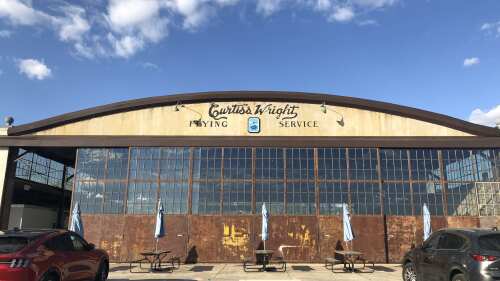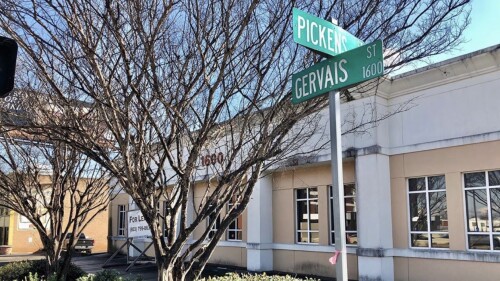#TBT: 3 sister hurricanes to Florence
With Florence on the way and the Carolinas in a state of emergency, we’ve already provided you with a guide to prepare for what’s ahead (including how to help those evacuating from low-lying and coastal regions).
In light of what is headed our way, we’re taking a step back in time and recapping three devastating sister hurricanes that have hit the Carolinas in years past.
⛈️Hurricane Hugo
September 1989 | Category 4
Hugo gained hurricane strength on Sept. 15, 1989. The next day, Hugo reached maximum winds of 160 mph, becoming a rare Category 5. As it made its way through Puerto Rico, Hugo weakened significantly. By the time the storm made landfall on the U.S. coast (at midnight on Sept. 22) near Sullivan’s Island, S.C., it was at a Category 4 level.
Hugo first touched Guadalupe, the U.S. Virgin Islands + Puerto Rico before making it to the S.C. coast. Intense hurricane winds reached inland areas that almost never see such severe conditions. Columbia, Charleston, Sumter + even Charlotte saw winds over 65 mph. By morning on Sept. 22, Hugo had been inland long enough to downgrade to a tropical storm as it passed between Hickory + Morganton. WNC still saw tremendous destruction as millions of trees blew down.
Hugo was responsible for at least 86 fatalities and caused at least $8-10 billion in damage. For such a large hurricane, the rainfall totals were surprisingly low. The low totals were likely due to Hugo’s rapid forward movement, nearly 35 mph. Florence is currently moving at about 16 mph.
⛈️Hurricane Gracie
September 1959 | Category 4
Hurricane Gracie gained strength as it passed by the Bahamas on Sept. 22, 1959. The storm intensified even more as it moved eastward + made landfall in S.C. on the morning of Sept. 29 as a Category 4 hurricane.
Gracie first touched land in St. Helena Sound, S.C. Wind gusts measured as high as 138 mph near Beaufort and at least 150 mph along coastal sections of Beaufort, Colleton + Charleston Counties. After landfall along the S.C. coast, Gracie continued to push inland toward the northwest and north, producing heavy rain + tornadoes.
Downed trees and power lines prevented travel, and electricity + clean drinking water remained unavailable for weeks. The National Guard helped clean up the extensive damage in Beaufort County. Across St. Helena Sound on Edisto Island, the beach was destroyed and was later rebuilt with “shell hash” which remains in place to this day. Since the storm came ashore at low tide it limited the impact of the storm surge and possibly prevented an epic storm surge disaster along the S.C. coast. The estimated cost in damages was $5-10 million.
⛈️Hurricane Hazel
October 1954 | Category 4
On Oct. 9, 1954, Hazel intensified into a powerful Category 4 storm with maximum winds of 135 mph. On Oct. 11, Hazel crossed over Haiti leaving a devastating trail. It then crossed over warm tropical water, strengthening in power before traveling over the Bahamas and finally made landfall on the N.C. + S.C. coast the morning of Oct. 15.
Almost all of the East Coast saw detrimental effects as Hazel ripped through. Winds of 98 mph were measured in Wilmington while winds were estimated at 125 mph at Wrightsville Beach + 140 mph at Oak Island. A storm surge of over 12 feet flooded a large area of coastline reaching as high as 18 feet at Calabash, nearly wiping out Garden City, S.C. Other areas saw extremely high winds. Raleigh recorded 90 mph, Washington D.C. recorded 78 mph with gusts over 90 mph. Even NYC recorded a maximum wind gust of 113 mph. Heavy rainfall of up to 11 inches occurred as far northward as Toronto, Canada, resulting in severe flooding.
Hurricane Hazel was the deadliest + costliest hurricane of the 1954 hurricane season and is the only Category 4 hurricane to ever hit the N.C. coast. Hazel was responsible for 95 deaths and $281 million in damage in the U.S., 100 deaths and $100 million in damage in Canada + an estimated 400 to 1000 deaths in Haiti. As the original forecasts came out it was believed that Hazel would remain offshore and weaken, but it quickly took a turn, leaving limited time for evacuations. Brunswick County suffered the heaviest damage, where most homes were either completely destroyed or severely damaged. In Long Beach, N.C., only five of the 357 buildings were left standing. According to the NOAA report on the hurricanes for the year 1954, “every pier in a distance of 170 miles of coastline was demolished.”
With Florence on the way, S.C. is (understandably) a bit on edge. It has been quite a while since the last major hurricane made its way to both of the Carolina coasts.
Here in Cola, we’ll likely be hunkered down inside as heavy winds + rain roll into the Midlands Friday through the weekend.
Bookmark our hurricane prep guide, make sure you’re following all the local guidelines, and stay safe out there.
–the COLAtoday team











